When I switched WordPress providers, many of the pictures did not import properly. You may want to view the old site’s post instead.
The new incentive
This post continues a saga I began in an earlier post on the hobby of painting miniature figures. In that post, I described how I managed to paint the minis in the game Mysthea to a satisfactory level.
At the end of that post, I looked forward to painting the dragon Volfyirion and the miniatures in Icaion, both from Tabula Games. I’ll go over my efforts to paint Volfyirion in another mini-painting post.
Since I wrote that post, a new element entered the picture: I pre-ordered two more games with miniature figures: Tainted Grail and Etherfields, both published by Awaken Realms. I knew from Icaion’s Kickstarter campaign that painting those minis would test the limits of my skill. Well, with all due respect to the designers at Tabula Games, the mini designers at Awaken Realms are more ambitious. If you click on the Tainted Grail and Etherfields links, you’ll see how elaborate their minis are.
The Awaken Realms minis are beyond my skill to paint, even with the watercolor-like approximations I applied to the Mysthea minis. With only one working eye and trembling fingers, I did not think I could improve my ability above what it currently is.
However, an idea presented itself. The Awaken Realms Kickstater pages offered to paint the minis for you, using a technique they called Sundrop; Aella13 calls this pre-shading and Vince Venturella calls it sketch style. It’s a simple method: zenithal prime a mini, apply a wash for contrast, and you’re done. In fact, it’s what I did for the armies in Mysthea:


Tan zenithal
As I went over in my previous mini post, conventional zenithal priming has an overall coat of black primer, an angled coat of light gray, and and overhead spray of white.
However, I learned that when you plan to paint in warm or autumnal colors (e.g., brown, red, orange, yellow) it’s best if you’re painting over another warm color. Since I planned to paint Volfyirion as a fire dragon, I explored a different zenithal scheme.
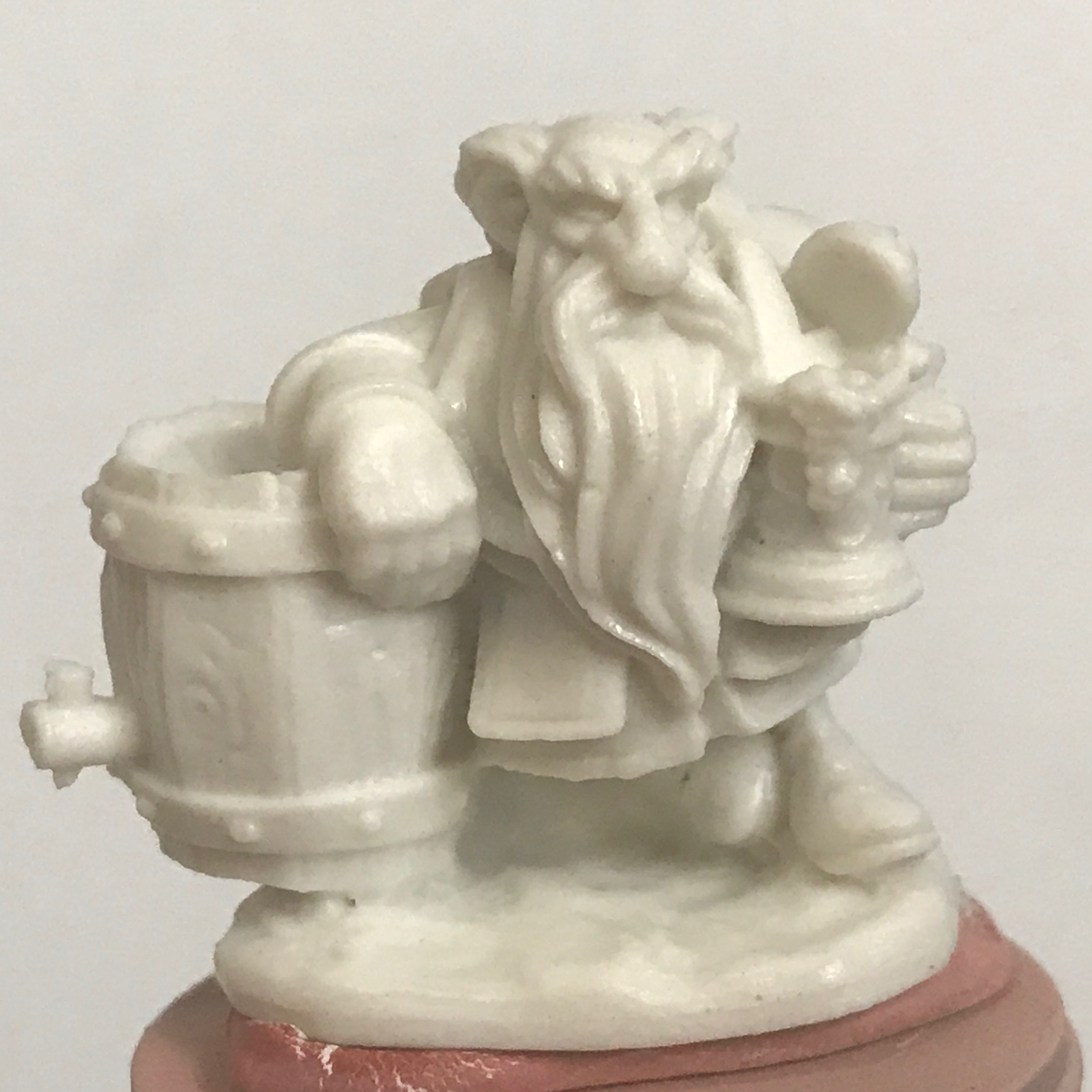

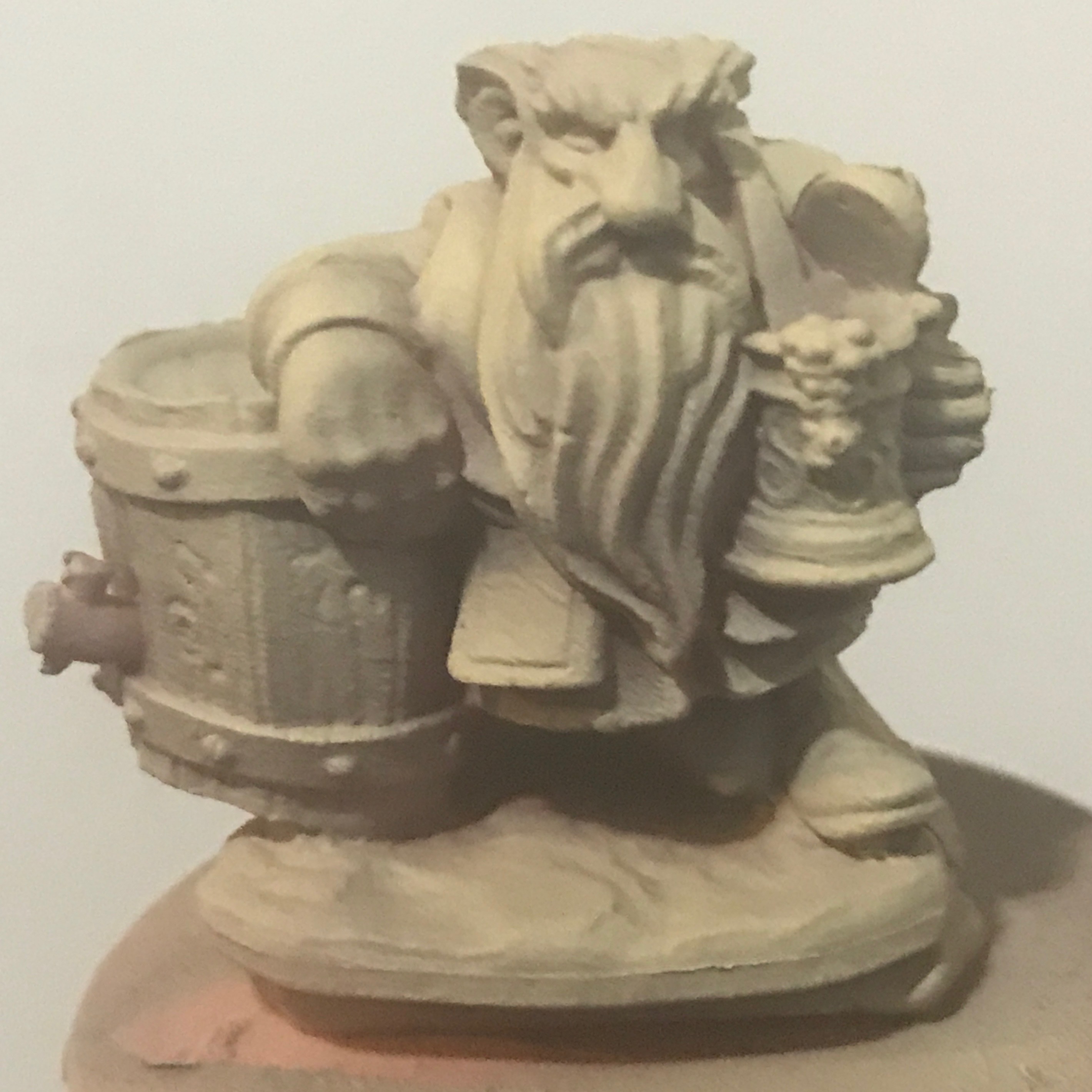

Let’s compare the “gray zenithal” with the “tan zenithal”:
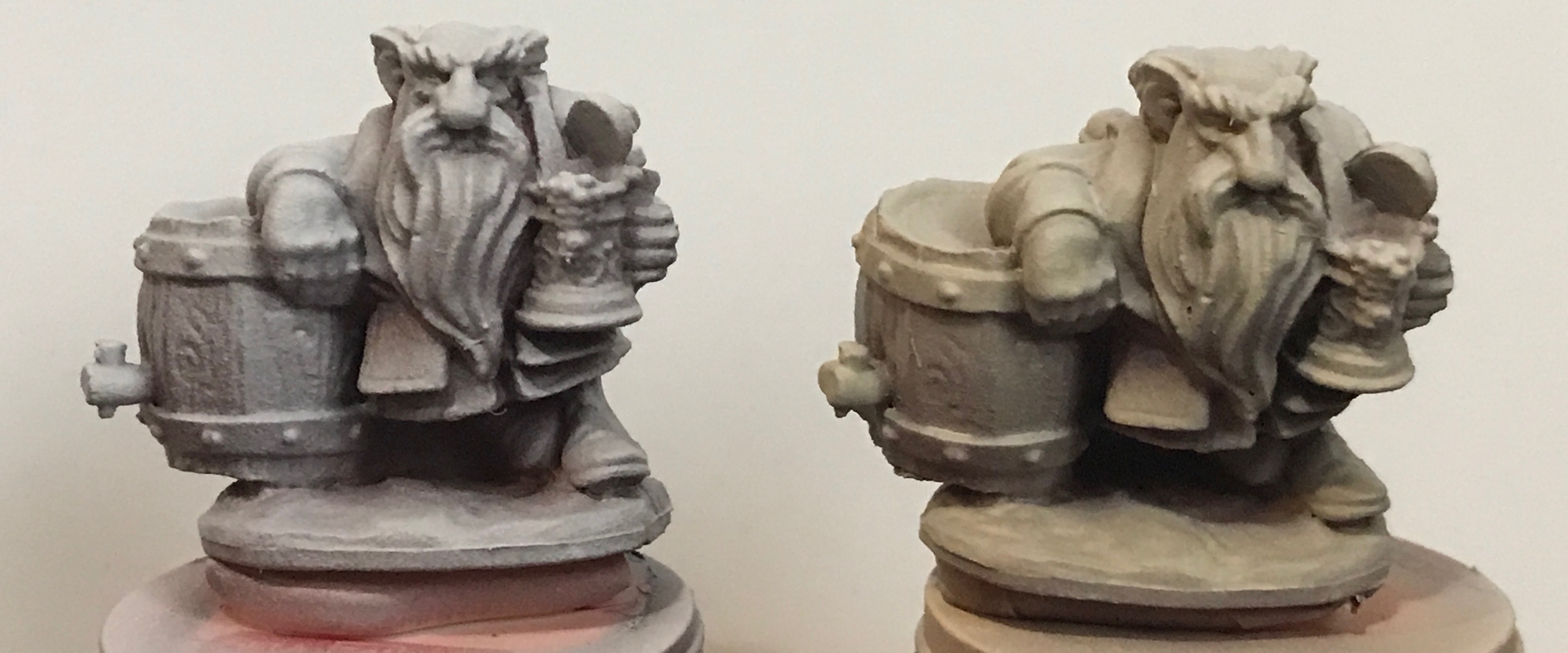
To test the assertion that warm colors would look better over a brown-ish base, I airbrushed both minis with a 1:1 mix of Vallejo Air Red with Vallejo Glaze Medium. I chose this mix because I wanted the red to be translucent enough that it wouldn’t completely override the zenithal effect. I used glaze medium instead of water because I didn’t want to thin the Vallejo Air paint any further, since it was already thinned for airbrushing.

To my eye, the mini on the right has the more vibrant color. The color theorists are right!
Given this result, I knew I was going to run more tests using autumnal colors. I applied a tan zenithal to all my remaining Dwarf Brewer minis. I then applied a red glaze to a couple more to see effect of washes on top of the glaze.

Sundrop / pre-shading / sketch style
The tests I did with the red glaze were in anticipation of techniques I’d use to paint Volfyirion (in a later post I describe why I dropped this approach). But although wash-over-glaze is a perfectly valid technique, I wanted to see what I could do with just the Sundrop approach: wash-over-zenithal. I tested with more tan-zenithaled Dwarf Brewers.
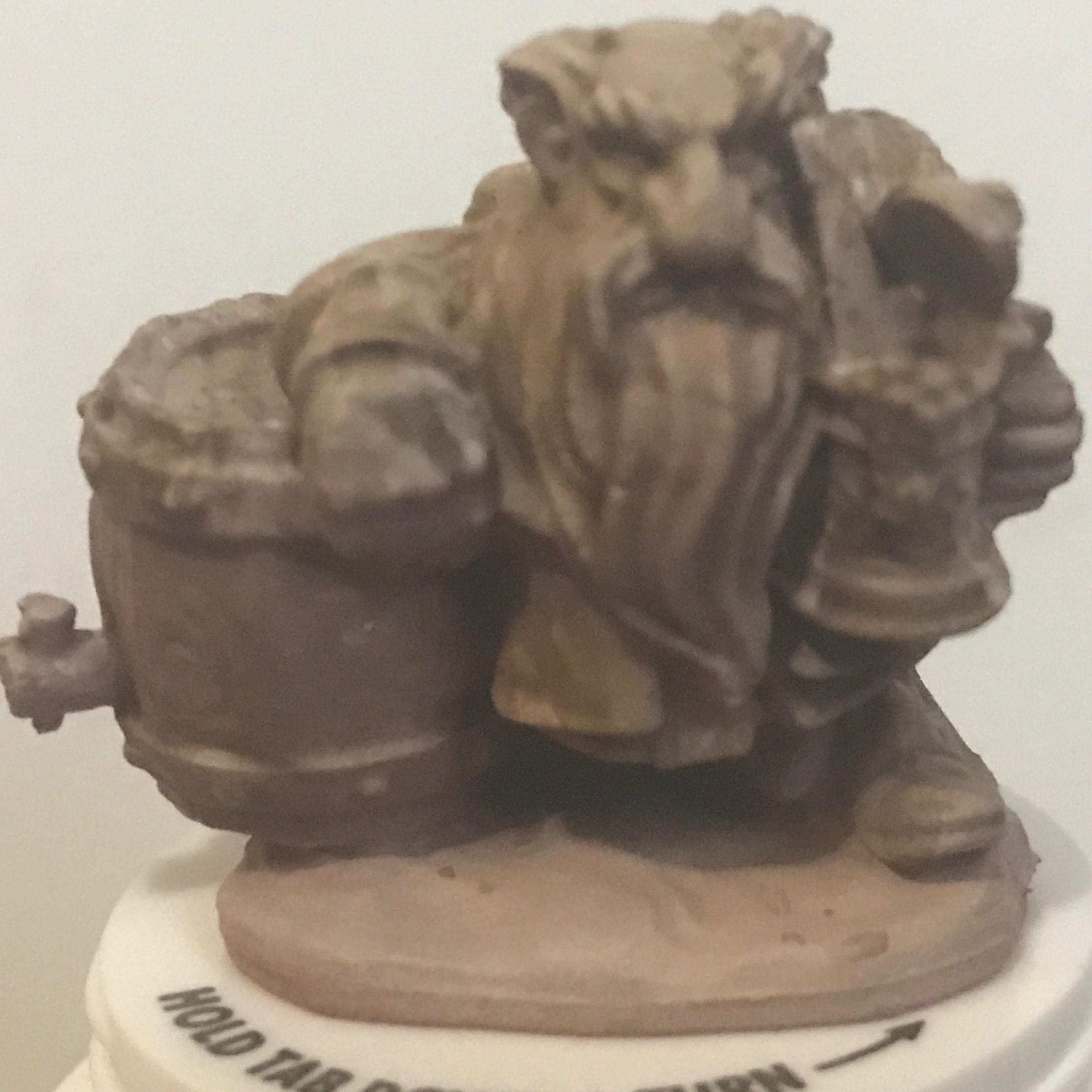
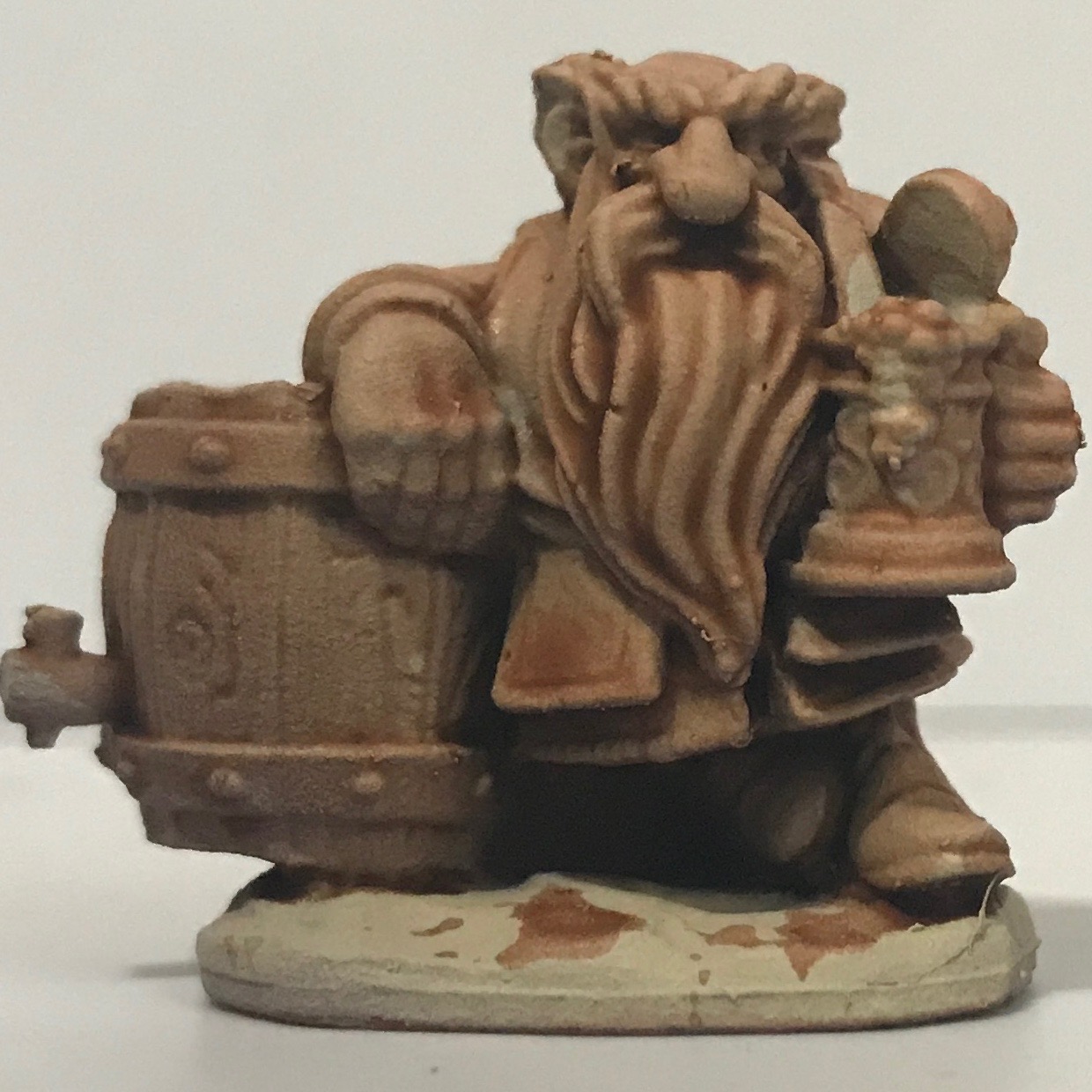

I also have some pictures of the same approach with non-Dwarf non-Brewers.

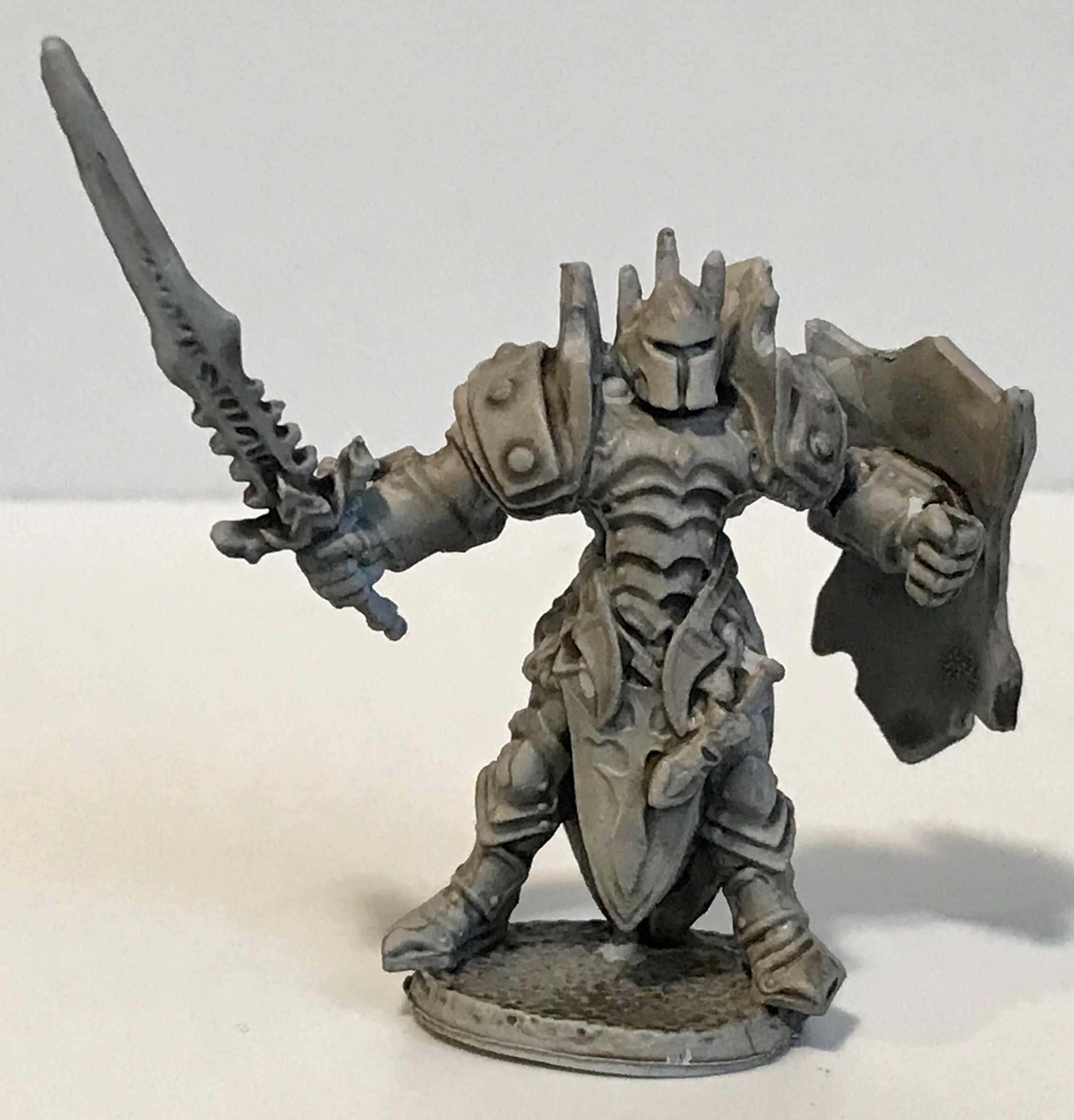
I was content with the results I got. I knew I could Sundrop minis fairly quickly, not get bogged down in details, and get the gray off the table. If you’re wondering what that last phrase means, compare this image with unpainted minis to this image with painted ones.
So all was well and I had a plan. Until…
Contrast paints
If you paint miniature figures, it’s hard to escape the hype surrounding Citadel Contrast Paints. If you don’t paint minis, the quick summary is that, for newcomers to the hobby, they can accomplish a single coat what would otherwise involve a basecoat+wash+drybrush.
They’re supposed to be easy to use: just slop the paint over white primer and you’re done. For the inexperienced, they’re supposed to give the visceral thrill of quickly painting a mini. The experienced have access to more powerful techniques (blending, layering, etc.) and don’t have much use for them.
I saw the videos and I was intrigued. A product made for n00bs? Well, I are one.
Finally, a friend of mine made a recommendation that I give contrast paints a try. I succumbed to peer pressure and tried a few to see how well they worked. Was it all hype?
To my pleasant surprise, the answer was no. All of the following examples are contrast paints over tan zenithal.




It may not be clear from the pictures, but the contrast paints’ colors are richer than those of the washes. The recesses into which the paint flowed are darker than with the wash, so the raised areas are highlighted more. This definitely doesn’t come across in the photos: The darker contrast paint colors have a sheen to them that makes the surfaces seem almost metallic; the Wyldwood mini looks like it was made of bronze.
That last point raises the issue of how to varnish a contrast-painted mini while retaining that sheen. Do I use a varnish with a satin finish or one with a gloss finish? I’m sure you’ve guessed the answer: I’ll have to test on more Dwarf Brewers.
I’ve ordered some more contrast paints, and Dwarf Brewers to test them on (of course!). There’ll be a follow-up post with more contrast paint examples. If you’d like to get an idea right now, check out this page.
This doesn’t mean I reject using washes over zenithal for my future Sundrop efforts. Depending on the figure, I might want a less intense color; e.g., a mist creature or an undead. I’ll decide on a figure-by-figure basis as the games arrive.
Going back to Etherfields, I found a video of someone painting Etherfields miniatures. Synopsis: The painter (who is far more experienced than I am) spent a long time painting one of the figures in detail (the mini on the right in the video’s preview image). After that, he settles for using contrast paints to Sundrop the minis, with some minor highlights on the larger ones (the mini on the left in the preview); that’s pretty much what I plan to do.
This is one of the most popular posts on this blog. Therefore, my conscience demands that I mention that I get a tiny pittance if you click on the Amazon product links and purchase something through them. I feel this is okay to do, because I have no soul.

Pingback: Vindication of the Dragon at the Edge of Darkness – The Argothald Journal
Pingback: Contrast Paints and a Metal Dwarf – The Argothald Journal
Pingback: Contrast Paints, a Golden Dwarf, and Contrast Medium – The Argothald Journal
You are not supposed to use the contrast paint on a white primer. First you should do a grey + white highlighted basecoat and then apply the contrast/speedpaints on the model. This gives you a very cool blending effect and it is basically how the contrast paints are meant to be used. So not for complete noobs after all. 🙂